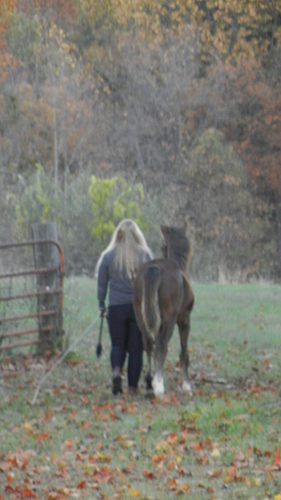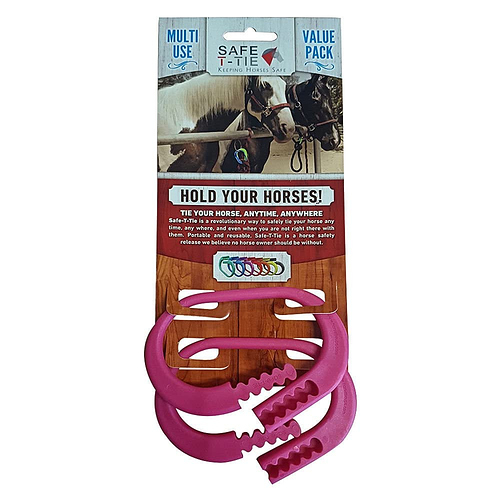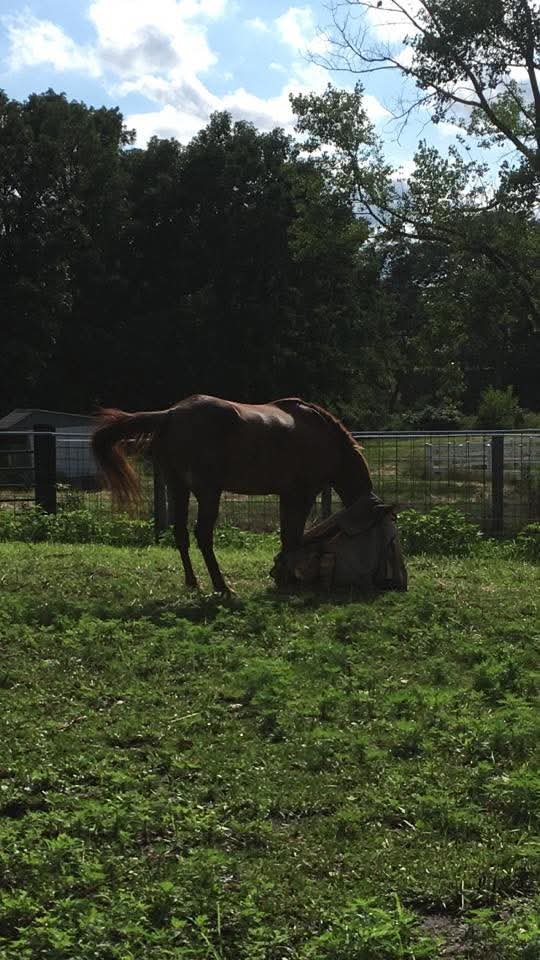Sure!
I start with basic halter/leading training. I use a butt rope on newborns and do not pull on their faces until they understand that “follow the human” is step one.
The first pressure/release lesson I give is in the stall, with mom right there (usually eating her dinner) for reassurance. I use literally just the weight of a couple of fingers on the noseband of their foal slip. I will hold ever so gently - don’t even fully close my fingers - until the foal turns its head even 1/2". Immediately (this is key!) release the pressure, give a sing-song “Good boy/girl!”, and rub baby’s neck. That’s it for day one. I do that maybe 3 times the next day, and the next. Once the foal understands that, I will add a lead rope and start asking for a step to the left or right in response to very gentle pressure. I build on each day’s lesson until the foal is happily leading a couple of circles each direction in the stall and stopping when I stop (“whoa” comes a bit later).
When we’re good in the stall (usually takes a couple of weeks, max, with my good-minded babies), then I will start working on the same skills out in the pasture. I keep a butt rope on the baby just in case, but I almost never need it by that point. We walk little circles around mom/the other horses and gradually work up in time and distance as appropriate. My very general rule of thumb is no more than 1 minute of attention span is expected per month of age.
Once leading is going well, I will start on “whoa” as a true concept and ask baby to stand while I’m grooming, handling feet, etc. Usually, by a couple of months of age, I can loop the lead rope around a post and pseudo-tie the baby for basic grooming. After that, I will start working on a “head down” command. I start with the palm of my hand and later progress to downward pressure on the lead rope. At first, I am just looking for the foal to not push upwards against my palm, which is their natural reflex. That will build into them dropping their head as low as I’d like with just a gentle downward pull on the lead.
Around weaning age, I will start working on more lateral pressure exercises using a rope halter. I find that the rope halter gives a clearer signal and faster release than a flat leather or nylon one does. I stand at the foal’s shoulder and apply gentle sideways-and-back pressure on the lead. As soon as the foal starts to soften, release and praise. Eventually, a “two finger” pressure from this direction will bring the nose all the way around to where I am standing by the shoulder.
Once I have both lateral and downward softness, I feel ready to start working on more body control. I teach my youngsters to move a shoulder or hip laterally on command. Usually this starts with a flag - it makes a lot of motion and noise and makes my intention clearer. Very soon, just a pointed glance and a cluck will elicit the desired response. This is important because almost all babies will at least contemplate leaning back against the rope at some point while tied. When I see them start to move back, I look at their hip and cluck, they step forward, and we start ingraining that reflex to getting to the end of the rope.
After these basics are in place, and only then, will I start actually tying a youngster. Most of mine get here sometime in the middle of their first winter. I still stick with the “minute per month of age” attention span rule and don’t ever set a baby up to fail. And I never tie while introducing something new, even with very solid adult horses.
It is 1000% easier to train than untrain/retrain.
That may be more of a novel than you or the OP wanted! There are many roads to Rome, so I am not saying this is the only way. But, after being exposed to a wide variety of methods and traditions, from hunters to race horses to ranch horses and everything in between, I’ve settled on this system, and it works for me.



 My palomino once somehow ripped a (closed front) blanket liner enough to get a front leg through the neck hole of the liner but not the turnout sheet she was wearing over it. When my farm sitter arrived for morning feeding, she was just hanging out on three legs waiting to be rescued. She was 3 at the time.
My palomino once somehow ripped a (closed front) blanket liner enough to get a front leg through the neck hole of the liner but not the turnout sheet she was wearing over it. When my farm sitter arrived for morning feeding, she was just hanging out on three legs waiting to be rescued. She was 3 at the time.
